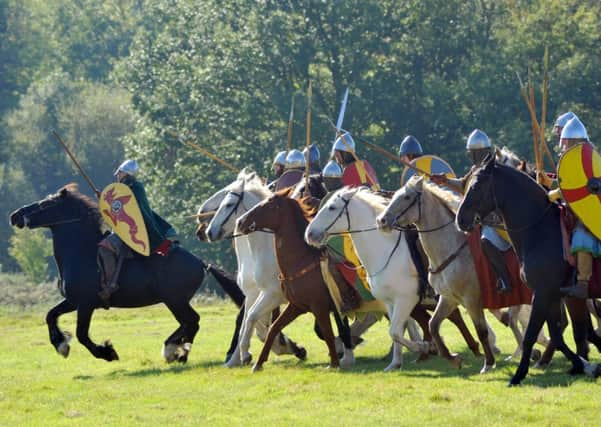Major dig planned to unearth relics from 1066


Although the current site at Battle Abbey has been accepted as the correct location for the bloody clash for centuries, no archaeological evidence associated with the battle has ever been found on the site.
Now English Heritage has asked Dr Glenn Foard, of Huddersfield University, to develop a project proposal with the hope of carrying out a major dig on the site.
Dr Foard hopes the project will uncover relics from 1066.
Advertisement
Hide AdAdvertisement
Hide AdBut before any dig can take place, Dr Foard and his team are faced with the task of sifting through the remains left behind by battle re-enactors over the decades.
The first stage of the project would see trained archaeologists removing the top layers of soil at a substantial area of the battlefield, in order to eliminate modern artefacts.
Immediately afterwards the search for genuine remains from the battle of 1066 will begin.
Dr Foard said: “Now the challenge is on to find out what archaeology is there, before it suffers contamination from all the activities that are going on.
Advertisement
Hide AdAdvertisement
Hide Ad“Whether there is archaeology under the ground to be confused by the re-enactment activities, we don’t know yet.”
One of Dr Foard’s battlefield coups was to detect the true location of the Battle of Bosworth, where Richard III was slain in 1485.
The result of Dr Foard’s work found that the actual battle took place more than two miles from the site where it was traditionally thought to have been fought.
However, as he collaborates with English Heritage to plan his investigation of Hastings, he is working on the assumption that the Battle of Hastings in 1066 was fought on its traditional site, even though there have been attempts to establish an alternative location.
Advertisement
Hide AdAdvertisement
Hide AdDr Foard said: “I have no reason to believe that any of the alternatives are likely.
“I will never say that they are impossible – not after my work on Bosworth – but all the evidence I saw when I looked at Bosworth suggested that it wasn’t fought on the traditional site.
“At Hastings, however, everything I have looked at tells me that the battle did take place on the generally accepted site.”
Dr Foard says the first stage of the project could take place as early as Spring 2015.
Advertisement
Hide AdAdvertisement
Hide AdBut English Heritage says that no date has been set and the project has yet to be signed off.
A spokesperson for English Heritage said: “This work is part of English Heritage’s ongoing research into the history of Battle Abbey and the site of the Battle of Hastings.
“The Battle of Hastings is the most famous battle in English history and one of the most significant.
“Much of the registered battlefield is managed by English Heritage on behalf of the nation.
Advertisement
Hide AdAdvertisement
Hide Ad“As part of its stewardship of the site, English Heritage has been working with battlefields archaeologist Dr Glenn Foard to investigate the battlefield’s archaeological potential.
“We have successfully tested a methodology designed to enable investigation of buried deposits and are together developing a project which would employ this approach on several sections of the battlefield.
“So far this work has revealed an unexpected issue associated with re-enactments of the battle.
“Over time it is possible that objects dropped by re-enactors might become indistinguishable from 11th-century objects.
Advertisement
Hide AdAdvertisement
Hide Ad“This had not been previously recognised on English battlefields and our ongoing work at Battle is designed to reduce that possibility. It will also inform management regimes on other battlefield sites.
“By revealing the character of any archaeological remains associated with the battle it will help us protect and preserve the battlefield’s significance.”